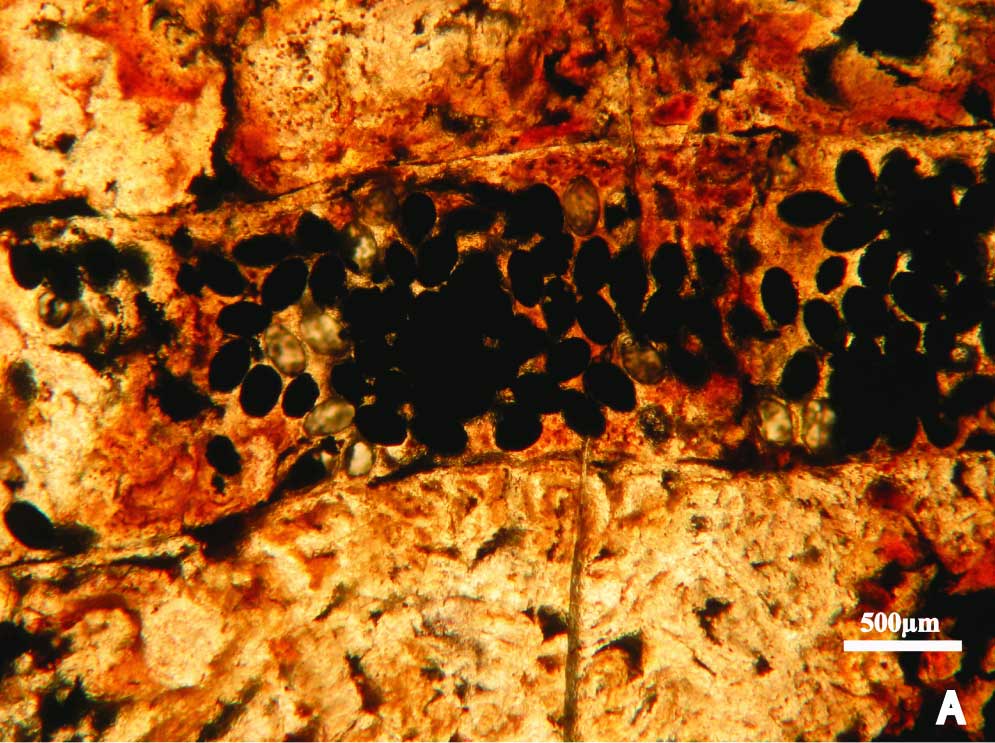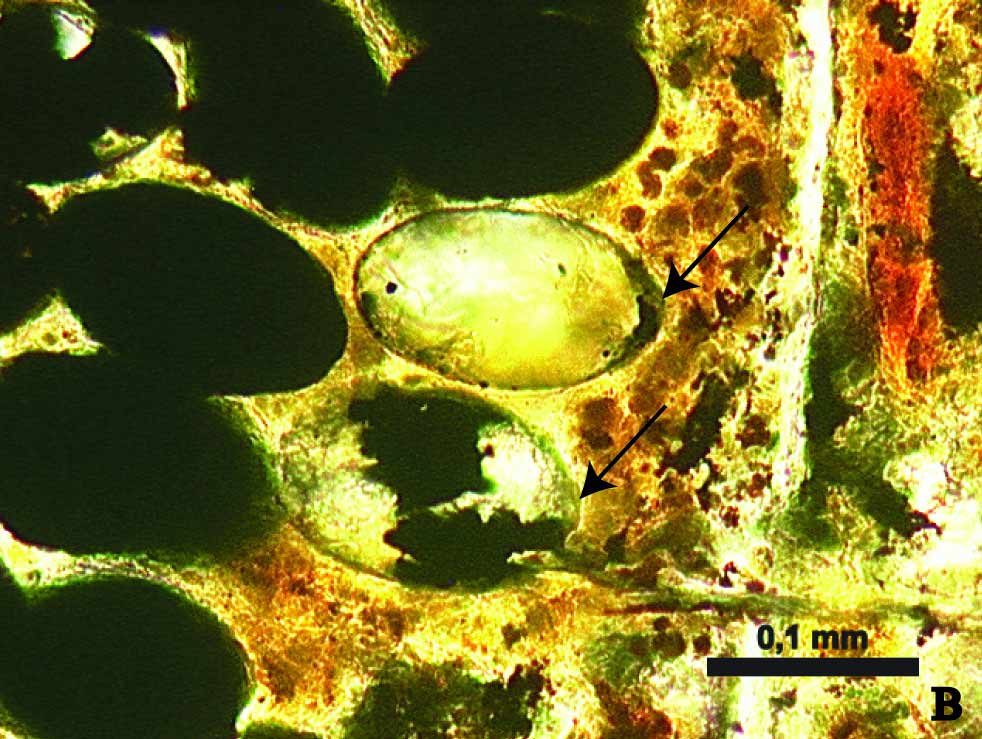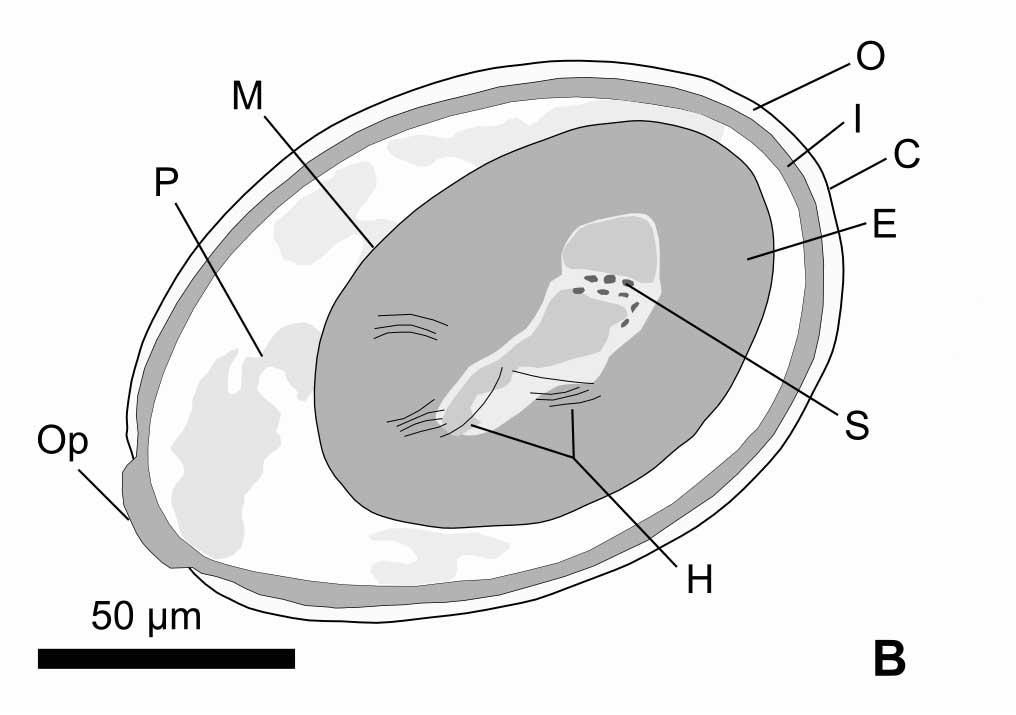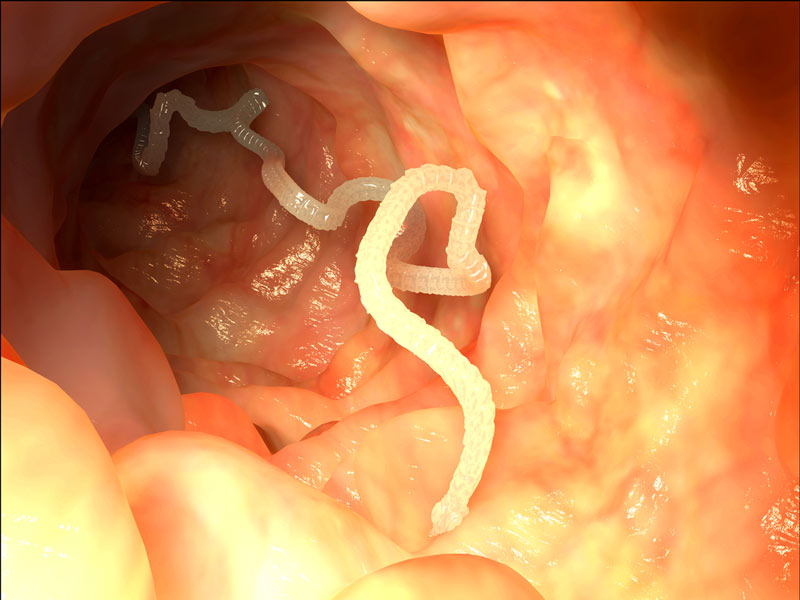Image Gallery: Parasite Eggs Lurk in Fossilized Shark Poop
Fossil Poop

Fossilized shark poop, called a coprolite (shown here), was found to contain ancient tapeworm eggs.
tapeworm eggs

Researchers found a cluster of 270-million-year-old tapeworm eggs (shown here) in fossilized shark poop.
Perfect Ovals

The eggs were perfect oval shapes, with each spanning only about 150 microns long, or about one-and-a-half times the average width of a human hair. The researchers discovered the eggs by cutting coprolites into thin slices.
Growing Larva

One of the tapeworm eggs even contained a probable developing larva (E), which held a cluster of fiberlike objects that may have been the beginnings of hooklets used to attach to a host's intestines as adults.
Tapeworm Details

Here a schematic of the tapeworm egg showing: the shell (C), embryo or larva (E), developing hooklets (H), inner envelope (I) and outer envelope (O).
Today's tapeworms

Like today's tapeworms, these ancient parasites would have clung to the intestines of the shark or other vertebrate (animal with a backbone). When the parasite reached adulthood, it would unleash its eggs on the world via the feces of its host. Here, a tapeworm attached to a human intestine.
Graspers

Here, a scanning electron micrograph of the scolex (anterior attachment organ) of Rhinebothrium sp., an extant tapeworm.
Get the world’s most fascinating discoveries delivered straight to your inbox.
 Live Science Plus
Live Science Plus






